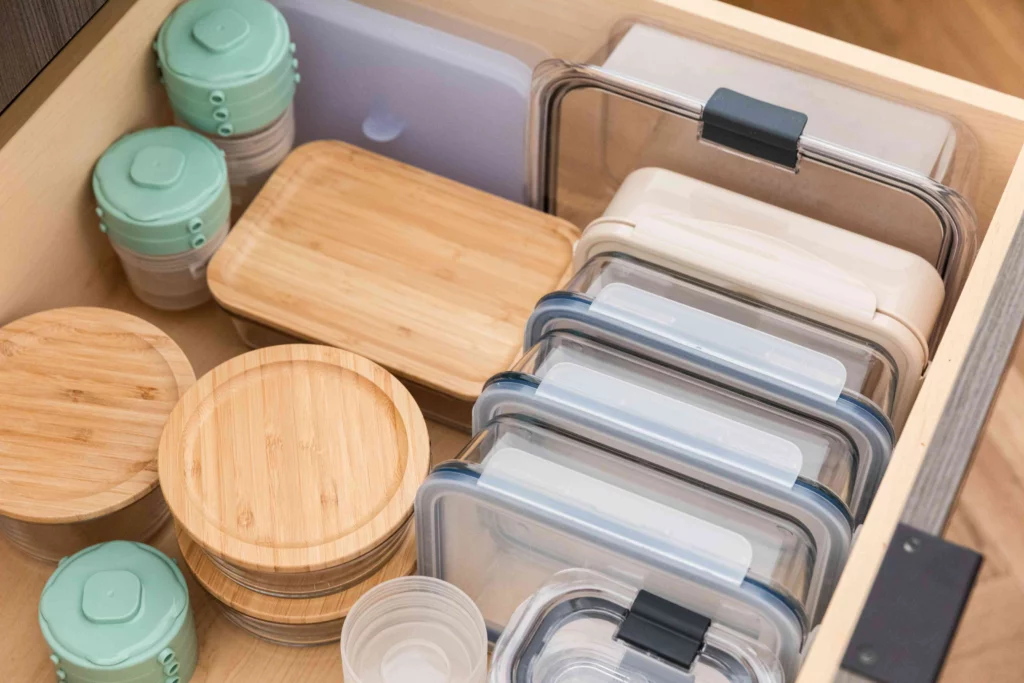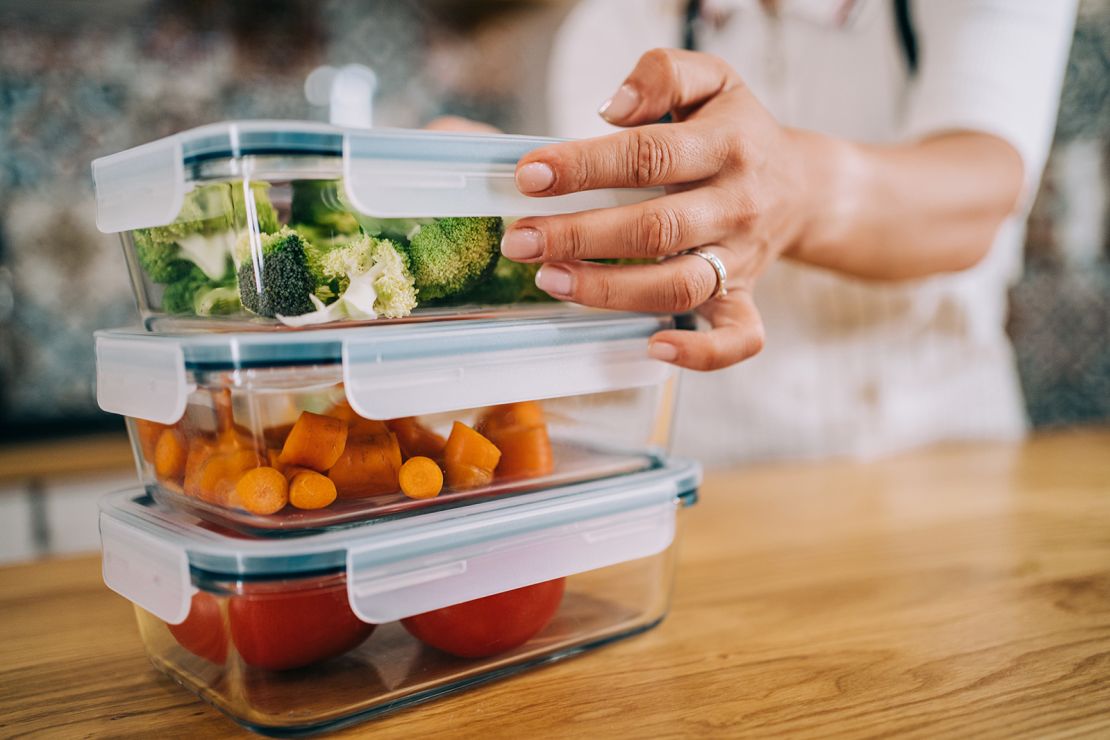Struggling to keep your pantry organized, preserve leftovers efficiently, or maintain food safety standards in a busy kitchen? This guide is your ultimate resource for selecting food storage containers that perfectly align with your specific needs. Whether you’re dealing with the challenges of a bustling food service operation or just trying to simplify meal prep at home, we’ve got you covered.
Discover expert insights into materials, sizes, and features that maximize efficiency and reduce waste, while ensuring freshness and safety. Plus, we’ll help you think ahead by exploring solutions to the next problem: maintaining the longevity of your chosen containers. By the end, you’ll have all the tools and knowledge needed to streamline your kitchen operations and tackle future storage challenges effortlessly.
Key Features to Consider When Choosing Food Storage Containers
When evaluating food storage containers, there are several key factors to keep in mind:
1. Material: Glass, Plastic, or Stainless Steel?
Each material offers distinct advantages and drawbacks:
| Material | Pros | Cons |
| Glass | Microwave-safe, transparent, durable | Heavier, breakable |
| Plastic | Lightweight, cost-effective, versatile | May retain stains or odors, not always BPA-free |
| Stainless Steel | Durable, stain-resistant, eco-friendly | Not microwave-safe, opaque |
Learn more in our article How to Select Food Storage Containers Based on Material., making it easy to identify contents. Learn more in our article How to Select Food Storage Containers Based on Material.
2. Intended Use
Consider whether the containers will be used for storing raw ingredients, leftovers, transporting meals, or portion control.
Containers designed for freezer, fridge, or pantry use are widely available to meet specific storage needs, as detailed in How to Choose the Right Food Storage Containers for Freezer, Fridge, and Pantry Use., as detailed in How to Choose the Right Food Storage Containers for Freezer, Fridge, and Pantry Use.
3. Size and Capacity
Choose sizes that suit your needs. For example, 3-5 litre containers are excellent for bulk storage, while 250-500 ml containers work perfectly for snacks. Popular models like those from Greenbox offer these options in durable materials., while smaller ones are better for single portions or snacks. Refer to this handy sizing chart:
| Use Case | Recommended Size |
| Bulk Ingredients | 3-5 Litres |
| Leftovers | 0.5-1.5 Litres |
| Snacks/Small Items | 250-500 ml |
Different Types of Food Storage Containers
Food storage containers come in various styles and designs to suit diverse needs:
1. Airtight Containers
These containers are perfect for maintaining the freshness of dry goods such as flour, sugar, or cereal. The airtight seal prevents moisture and pests from spoiling the contents, making them ideal for long-term storage.
Additionally, they help to lock in flavors and preserve the nutritional value of your food.
2. Stackable Containers
If you’re short on space, stackable containers are an excellent choice for maximizing storage in pantries or commercial kitchens.
Their uniform shape ensures efficient use of vertical and horizontal space, reducing clutter. Many models are also designed to be modular, allowing for customized organization based on your needs.
3. Compartmentalized Containers
These containers are ideal for meal prep or portion control, allowing you to separate multiple food items in a single container. They’re particularly useful for packing lunches or organizing snacks. With their individual compartments, they help to maintain the taste and texture of different foods without mixing flavors.
4. Specialty Containers
Specialty containers, such as those designed for freezer or microwave use, are tailored for specific applications.
Freezer-safe containers are made to withstand low temperatures without cracking, while microwave-safe options ensure safe heating of meals. These features make them versatile and essential for busy kitchens.
Best Suppliers of Food Storage Containers in Europe
Here are some of the top suppliers offering high-quality food storage solutions:
- ADEBO: Specializes in versatile, high-durability containers.
- APS: Known for stylish and functional designs for professional use.
- Greenbox: Offers eco-friendly, sustainable options.
- Duni: Focuses on innovative, disposable solutions for catering.
- Metsä Tissue: Provides durable and practical food storage solutions for bulk needs.*
These suppliers are trusted across Europe for their robust and versatile container offerings.
Related Product Categories for Comprehensive Kitchen Solutions
When purchasing food storage containers, you might also want to explore related categories:
- Disposable Cutlery for single-use settings.
- GN Containers for large-scale food service needs.
- Takeaway Bowls for convenient meal transport.
For more insights, check our guide on GN Containers Buying Guide: Tips for Making the Right Choice.
Industries and Applications
Food storage containers are versatile and widely used in various sectors:
- Food Service: For portion control and food safety.
- Food Production: Storing raw ingredients and finished products.
- Hospitality: Maintaining organized kitchens and catering setups.
- Catering: Transporting meals to events safely and efficiently.
How to Maximize the Lifespan of Food Storage Containers

Proper care ensures your containers remain functional and durable:
- Clean Regularly: Wash containers with mild soap and water immediately after use to maintain cleanliness and freshness. For stubborn stains on glass or plastic, consider using a baking soda paste.
- Use Correctly: Always check manufacturer guidelines for microwave, freezer, and dishwasher safety. For instance, products like those from APS often include specific instructions.
- Store Smartly: Stack containers neatly and nest smaller ones inside larger ones to save space while avoiding lid deformation. Wash containers immediately after use to prevent staining or odor retention.
- Use Correctly: Follow guidelines for microwave, freezer, and dishwasher safety.
- Store Smartly: Nest stackable containers to save space and prevent damage.
Conclusion
We hope this guide has provided you with the insights you need to confidently choose the best food storage containers for your specific needs. From understanding the importance of material selection to exploring specialized designs for various applications, this guide is designed to simplify your decision-making process and help you make informed choices.
Explore the full range of Food Storage Containers on Droppe, featuring trusted brands like ADEBO, APS, and Greenbox.
Visit our other articles on Takeaway Bowls and Disposable Cutlery for additional tips.
Still have questions or need expert advice? Don’t hesitate to reach out—our team is always ready to help you find the perfect solutions to enhance your kitchen’s functionality and efficiency.
– The Droppe Team
Frequently Asked Questions
Not all containers are microwave-safe. Look for labels or symbols indicating microwave compatibility, especially for plastic containers.
Wash containers immediately after use, especially when storing acidic or oily foods, and consider using glass for stain-prone items.
Use removable labels or a dry-erase marker for temporary notes. Permanent markers can be used for long-term storage.
Many plastic containers are recyclable if marked with the appropriate symbol. Check local recycling guidelines for details.
Freezer-safe containers are designed to withstand low temperatures without cracking, often featuring airtight seals to prevent freezer burn.

















